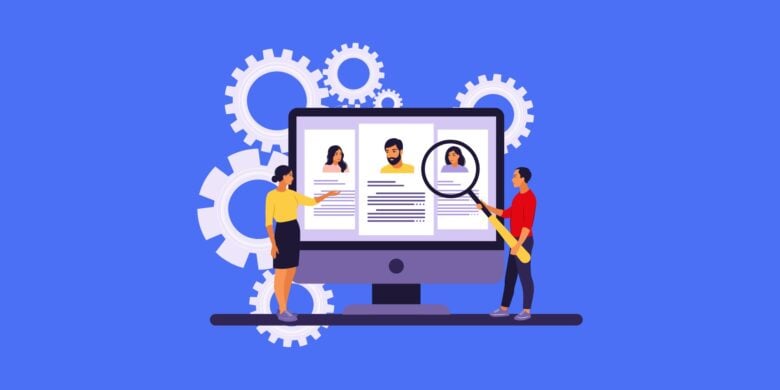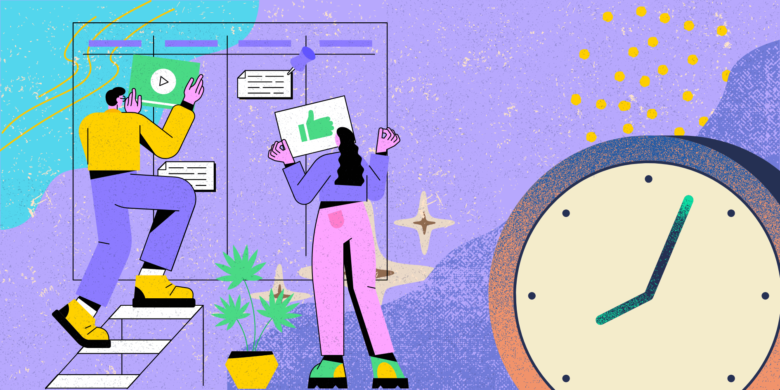In the intricate world of architecture, where precision and creativity intersect, time tracking for architects is crucial. Architects must juggle diverse tasks such as conceptual design, technical drafting, client meetings, and construction management.
With these varied responsibilities, tracking every minute becomes essential for maintaining efficiency and ensuring project success. Time tracking software can transform how architects manage their work, offering clear benefits such as enhanced project management, accurate billing, and improved productivity.
This article delves into why time tracking is vital for architects, highlighting the key features to look for in time tracking tools and reviewing the best software options tailored for architectural needs. Additionally, we provide practical strategies for implementing time tracking in your business, ensuring a smooth transition and maximizing the benefits.
Boost your team’s efficiency with Hubstaff's productivity tools
Importance of time tracking for architects
Time tracking software has become an indispensable tool for architects and architectural firms. It offers numerous benefits that go beyond simply recording hours worked.
Why is time tracking important?
Time tracking is crucial for optimizing productivity, ensuring accountability, and maximizing team efficiency.
Did you know that 67% of construction projects now rely on cloud-based tools and software for seamless collaboration?
In this section, we will explore how reliable time tracking tools can transform your approach to project management, improve financial accuracy, and drive overall efficiency within your firm.
Enhancing project management
Time tracking software is a critical tool for enhancing project management in architectural firms. By meticulously monitoring the time spent on various tasks and phases using automatic time tracking software, architects and project managers can ensure that projects stay on schedule and within budget. Detailed time tracking helps plan and execute projects more efficiently by clearly showing how resources are utilized.
This data enables teams to identify bottlenecks, allocate resources more effectively, and adjust plans proactively to avoid delays. Architects can streamline workflows, improve coordination among team members, and deliver superior outcomes for clients by having a comprehensive overview of project timelines through a time tracking app.
Accurate billing and invoicing
Accurate billing and invoicing are essential for maintaining client trust and ensuring the financial health of architectural firms. Time tracking software captures every billable hour, leading to precise and transparent invoicing. This helps foster trust and satisfaction among clients and improves the firm’s cash flow and profitability.
Architectural firms can justify their invoices, reduce disputes, and enhance client relationships with detailed records of hours worked provided by time tracking software. Accurate billing based on data from time tracking software ensures that clients are billed fairly for the work performed, which is crucial for maintaining a professional and trustworthy reputation.
Boosting productivity

Approximately 79% of architects believe digital tools will enhance their productivity and project outcomes.
Time tracking software is a powerful tool for boosting productivity within architectural firms. By providing detailed insights into how time is spent, time tracking software helps identify inefficiencies and areas where improvements can be made.
Project managers can analyze data from time tracking software to understand which tasks are taking longer than expected and why. This information is invaluable for optimizing workflows, reallocating resources, and implementing more efficient practices. By addressing these inefficiencies with the help of time tracking software, firms can improve overall productivity, reduce costs, and increase the quality of their work.
Time tracking software empowers architectural firms to continuously refine their processes, ensuring they remain competitive and productive in a demanding industry.
Key features to look for in time tracking software
Choosing the right time tracking software for architects can significantly impact your productivity, project management, and billing accuracy. With so many options available, it’s essential to identify the key features that will best meet your needs. This section highlights the critical features to look for in time tracking software for architects and provides a checklist to ensure you make an informed decision.
Ease of use
The importance of ease of use cannot be overstated, as complex or cumbersome software can lead to inaccurate time entries and decreased productivity. Look for software that offers intuitive navigation, clear instructions, and a minimalistic design.
User-friendly time tracking software ensures that all team members can quickly and efficiently log their hours without frustration, enhancing compliance and maximizing the accuracy of the data collected.
Checklist for ease of use:
- Intuitive navigation
- Clear, easy-to-follow instructions
- Minimalistic design
- Quick setup and onboarding process
- Positive user reviews highlighting ease of use
Integration capabilities
Seamless integration with project management software, billing systems, and other essential applications streamlines operations and enhances efficiency. When time tracking software integrates well with these tools, data can be easily shared across platforms, reducing manual data entry and minimizing errors.
Comprehensive integration capabilities ensure that your time tracking software becomes integral to your overall project management strategy.
Checklist for integration capabilities:
- Compatibility with your current project management software
- Integration with billing and invoicing systems
- Ability to sync with calendar and scheduling tools
- API availability for custom integrations
- Positive user reviews on integration performance
Detailed reporting
Detailed reporting is a vital feature that can significantly enhance the utility of time tracking software for architects. Generating comprehensive reports allows architects and project managers to track progress, analyze resource allocation, and identify potential issues early.
Effective time tracking software should provide customizable reports that can break down data by project, task, or team member. These reports offer valuable insights into productivity patterns, project timelines, and financial metrics, enabling better decision-making and strategic planning.
Checklist for detailed reporting:
- Customizable report templates
- Ability to break down data by project, task, or team member
- Visual data representation (charts, graphs)
- Export options (PDF, Excel, CSV)
- Positive user reviews on reporting features
Mobile access
Tools that allow mobile access to time tracking software ensure that architects and team members can log their hours from anywhere, on-site, in a meeting, or traveling. Mobile apps for time tracking software provide the flexibility to maintain accurate time records regardless of location.
This convenience enhances productivity and ensures that all billable hours are tracked. With mobile access, time tracking becomes a seamless part of daily routines, supporting the dynamic and mobile nature of architectural work.
Checklist for mobile access:
- Availability of mobile apps for iOS and Android
- User-friendly mobile interface
- Syncing capabilities with desktop and web applications
- Offline access for remote or on-site work
- Positive user reviews on mobile functionality
Security and privacy
Ensure the time tracking software provides robust security and privacy features such as data encryption, secure data storage, and compliance with industry standards like GDPR. Role-based access controls can also help manage who can view and edit different software parts.
Checklist for security and privacy:
- Data encryption
- Secure data storage
- Compliance with industry standards (e.g., GDPR)
- Role-based access controls
- Positive user reviews on security features
Customization options
Customizing the time tracking software to fit your needs can significantly enhance its utility. Look for software that allows you to customize fields, workflows, and user permissions. This flexibility ensures the software can adapt to your firm’s unique processes and requirements.
Checklist for customization options:
- Customizable fields and workflows
- Flexible user permissions
- Customizable dashboards and reports
- Positive user reviews on customization features
Support and training
Ensure the provider offers support options like live chat, phone support, and email. Additionally, look for software that provides training resources like tutorials, webinars, and a knowledge base.
Checklist for support and training:
- Availability of live chat, phone, and email support
- Comprehensive training resources (tutorials, webinars, knowledge base)
- Positive user reviews on customer support and training
Scalability
Ensure the software can handle increasing projects, users, and data without compromising performance. Scalability ensures that your investment in time tracking software will continue to meet your needs as your firm expands.
Checklist for scalability:
- Ability to handle an increasing number of users and projects
- Performance reviews for large-scale use
- Flexible pricing plans that accommodate growth
- Positive user reviews on scalability
Best time tracking software for architects
Selecting the right time tracking software can transform how architects manage their projects, track their time, and bill clients. Here are some of the best time tracking software options for architects, complete with their features, benefits, and pricing.
Hubstaff

Features:
Hubstaff offers a robust suite of features tailored to the needs of architects and architectural firms. These features include:
- Accurate time tracking to capture precise time logs for all activities.
- Timesheets to maintain detailed records of time entries, making it easy to track hours worked and billable time.
- Idle time monitoring to ensure productivity by identifying periods of inactivity.
- Productivity monitoring to gain insights into team performance with activity levels and detailed reports.
- GPS tracking to monitor the location of on-site team members to ensure accountability and manage fieldwork effectively.
- Invoicing to streamline billing with automated invoice generation based on tracked hours.
- Integration capabilities to seamlessly integrate with popular project management tools such as Asana, Slack, and Trello, enhancing workflow management and collaboration.
Benefits:
- Track time accurately to ensure every minute is accounted for, which is crucial for project management and client billing.
- Manage remote teams efficiently to keep remote and on-site teams aligned and productive with GPS and productivity monitoring.
- Capture billable hours to ensure all billable hours are accurately recorded, improving billing accuracy and financial health.
- Identify inefficiencies by using productivity monitoring to pinpoint and address workflow inefficiencies.
- Streamline project management to simplify coordination, task management, and communication with integrations like Asana, Slack, and Trello.
- Optimize resource allocation to improve project outcomes through detailed reports and insights.
Pricing:
Hubstaff offers several pricing plans to cater to different needs:
- Starter: $7 per user per month, including basic time tracking and productivity monitoring.
- Grow: $9 per user per month, offers advanced features such as integrations and time off management.
- Team: $12 per user per month, provides access to all features, including priority support.
- Enterprise: $25 per user per month (billed annually), designed for large teams with custom solutions and dedicated support.
By leveraging Hubstaff’s powerful features, architects can enhance project management, ensure accurate billing, and boost overall productivity, making it a valuable tool for any architectural firm.
Toggl Track

Features:
Toggl Track is known for its user-friendly interface and powerful time tracking capabilities. Key features include one-click time tracking, detailed reporting, project and revenue tracking, and integration with tools like Notion, Slack, and Salesforce. Toggl Track also offers background and automatic time tracking, which minimizes manual entries.
Benefits:
Toggl Track simplifies the time tracking process, making it easy for architects to log their hours accurately. Its detailed reporting features provide valuable insights into project progress and team productivity. The ability to track billable and non-billable hours ensures accurate client billing. Toggl Track’s integrations enhance its functionality, making it a versatile tool for managing projects and tracking time.
Pricing:
- Free: Up to 5 users, basic time tracking features.
- Starter: $10 per user per month, includes additional features like project templates and billable rates.
- Premium: $20 per user per month, including advanced reporting and time tracking automation.
- Enterprise: Custom pricing for large teams, including tailored solutions and dedicated support.
Monograph

Features:
Monograph is specifically designed for architects and design professionals. It offers project planning, time tracking, budget management, and invoicing features. Monograph’s intuitive interface and visualization tools, like the MoneyGantt, help architects manage project timelines and project budgets effectively. It also integrates with tools like Slack and QuickBooks.
Benefits:
Monograph’s focus on the needs of architects makes it an ideal choice for managing architectural projects. Its visualization tools provide clear insights into project progress and financial health, enabling architects to make informed decisions. The seamless integration with accounting and communication tools further enhances its utility, making it easier to manage all aspects of a project from a single platform.
Pricing:
Monograph offers two pricing plans:
- Track: $45 per month, includes basic project management and time tracking features.
- Grow: $95 per month, includes advanced features like budget forecasting and detailed financial reporting.
Apploye

Features:
Apploye offers a range of features tailored for time tracking and project management. These include start/stop timers, manual time entry, timesheets, idle time tracking, payroll management, and invoicing. Apploye also provides employee monitoring features such as activity tracking, screenshots, and GPS tracking. It integrates with various platforms, including Windows, macOS, Linux, Android, and iOS.
Benefits:
Apploye’s comprehensive feature set makes it a versatile tool for architects. Its employee monitoring features ensure that all work is tracked accurately, while the payroll and invoicing capabilities streamline financial management. The ability to track time and manage projects from multiple devices enhances flexibility and productivity for both in-office and remote teams.
Pricing:
Apploye offers several pricing plans:
- Solo: $4 per user per month, suitable for freelancers and individual contractors.
- Standard: $5 per user per month, designed for in-house teams.
- Premium: $6 per user per month, including mobile and in-house team features.
- Elite: $7 per user per month, ideal for remote, in-house, or hybrid teams.
- Annual plans are available at a 50% discount.
Clockify

Features:
Clockify offers a comprehensive suite of features for time tracking and project management. Their key features are manual time entry and detailed timesheets for accurate record-keeping. It also provides idle time tracking for productivity, project tracking to monitor progress, and invoicing capabilities for managing billing. Comprehensive reporting generates insights on project progress and team contributions. Clockify integrates with popular tools like Trello, Asana, and Slack and offers mobile access via iOS and Android apps for on-the-go time tracking.
Benefits:
Clockify’s robust feature set makes it a versatile tool for architects. Its time tracking and project monitoring features ensure precise work hour logging and efficient project management. The invoicing capabilities streamline billing processes, while the detailed reporting provides valuable insights for better decision-making. Clockify’s integration capabilities enhance workflow management by connecting with other essential tools. Mobile access ensures that time tracking can be done anywhere, increasing flexibility and productivity.
Pricing:
Clockify offers several pricing plans:
- Free: Basic time tracking features, suitable for freelancers or small teams.
- Basic: $3.99 per user per month, includes additional features like custom fields and reporting.
- Standard: $5.49 per user per month, offers advanced features such as project templates and invoicing.
- Pro: $7.99 per user per month, provides access to all features, including priority support and custom exports.
- Enterprise: Custom pricing for large teams, including tailored solutions and dedicated support. Annual plans are available at a discount.
Comparison chart of time tracking software for architects
| Feature | Hubstaff | Toggl Track | Monograph | Apploye | Harvest | Clockify |
| Ease of Use | ✓ | ✓ | ✓ | ✓ | ✓ | ✓ |
| Integrations | ✓ | ✓ | ✓ | ✓ | ✓ | ✓ |
| Reporting | ✓ | ✓ | ✓ | ✓ | ✓ | ✓ |
| Mobile Access | iOS, Android | iOS, Android | Desktop only | iOS, Android | iOS, Android | iOS, Android |
| Security and Privacy | Data encryption, role-based access | Data encryption | Data encryption | Data encryption | Data encryption | Data encryption |
| Customization | ✓ | ✓ | ✓ | ✓ | ✓ | ✓ |
| Support and Training | Live chat, phone, email, tutorials, webinars | Live chat, email, tutorials | Live chat, email, tutorials | Live chat, phone, email, tutorials, webinars | Live chat, email, tutorials | Live chat, email, tutorials |
| Scalability | ✓ | ✓ | ✓ | ✓ | ✓ | ✓ |
| Time Tracking | ✓ | ✓ | ✓ | ✓ | ✓ | ✓ |
| Timesheets | ✓ | ✓ | ✓ | ✓ | ✓ | ✓ |
| Idle Time Monitoring | ✓ | ✓ | ||||
| Productivity Monitoring | ✓ | ✓ | ✓ | |||
| GPS Tracking | ✓ | ✓ | ||||
| Invoicing | ✓ | ✓ | ✓ | ✓ | ✓ | ✓ |
| Pricing | $7 – $25/user/month | $0 – $18/user/month | $45 – $95/month | $4 – $7/user/month | $12/user/month | $0 – $9.99/user/month |
| Free Trial | ✓ | ✓ | ✓ | ✓ |
How to implement time tracking in your architectural firm
Here’s a comprehensive guide to setting up tracking software, training your team, and maintaining best practices for time tracking to ensure a smooth and effective implementation.
Setting up
- Choose time tracking software that fits your firm’s needs based on features, integration capabilities, and pricing.
- Follow the software vendor’s installation instructions to install the software. This may involve downloading and installing applications on desktops, laptops, and mobile devices.
- Create user accounts for all team members who will be using the software. Ensure each user has the appropriate access level and permissions.
- Customize settings to match your firm’s workflow. This includes setting up projects, tasks, billing rates, and any necessary integrations with other tools.
- Test the software with a trial run to ensure everything is working correctly. Address any technical issues and make adjustments as needed.
Training your team
- Provide initial training to ensure your team can use the time tracking software effectively and efficiently. Organize a training session to introduce the software to your team, covering the basics of logging time, creating projects, and generating reports.
- Create training materials such as easy-to-follow guides, video tutorials, and FAQs that team members can reference as they learn to use the software.
- Establish a support system where team members can ask questions and receive help. Include a designated point of contact within the firm or access to vendor support.
- Encourage practice by allowing team members to use the software on non-critical tasks before fully implementing it into their daily routines.
- Gather feedback regularly from your team about their experience with the software. Use this feedback to make improvements and address any concerns.
Best practices
- Set clear expectations by communicating the importance of tracking software for architects and setting clear expectations for logging hours. Ensure everyone understands the benefits and the impact on project management and billing.
- Log time daily to encourage team members to ensure accuracy and reduce the risk of forgotten hours.
- Use descriptive entries by instructing team members to use detailed descriptions for their time entries. This helps in understanding the context of the work and improves reporting accuracy.
- Review and approve entries by implementing a system for regularly reviewing and approving time entries. This can help catch errors early and ensure consistency.
- Monitor and analyze data regularly to identify patterns, inefficiencies, and areas for improvement.
- Provide regular feedback by offering constructive feedback to team members on their time tracking habits. Highlight areas of strength and provide suggestions for improvement where necessary.
Enhancing architectural practice with effective time tracking
Time tracking is essential for architects to manage multiple projects efficiently, ensure accurate billing, and boost productivity. By choosing the right time tracking software tailored to the unique needs of architectural work, architecture and engineering firms can gain invaluable insights into their workflows and resource allocation.
Excitingly, 63% of architectural firms foresee a significant increase in technology investment over the next five years.
Incorporating effective time tracking practices into your firm’s routine will streamline workflows, optimize resources, and ultimately lead to more successful project outcomes. Embrace time tracking to transform your architectural practice and achieve greater efficiency and client satisfaction.
Frequently asked questions about architecture time tracking software
Which is the best software for project hours tracking?
Hubstaff is an excellent choice for project hours tracking. It offers accurate time tracking, productivity monitoring, GPS tracking, and invoicing. These features help manage remote teams and on-site work effectively. Hubstaff integrates with tools like Asana, Slack, and Trello, streamlining workflows and boosting productivity. Pricing ranges from free to $25 per user per month, with plans catering to different needs. Its comprehensive feature set and ease of integration make Hubstaff a top option for architects seeking precise time management and improved project oversight.
How do you manage time as an architect?
Leverage technology, such as project management and time management software, to track project progress, set deadlines, and ensure accountability. Delegate tasks to team members, focusing on high-priority and complex tasks yourself. Finally, take regular breaks to avoid burnout, using techniques like the Pomodoro Technique, which involves working for 25 minutes and then taking a 5-minute break.
How do you implement time tracking?
Implementing time tracking involves several steps and best practices to ensure its effectiveness. Start by choosing the right software based on features, integration capabilities, and pricing to fit your firm’s needs. Follow the installation instructions provided by the software vendor, create user accounts, and customize settings to match your workflow. Finally, the insights gained from time tracking can be used to identify inefficiencies and make necessary adjustments to improve workflow and productivity.
How do you keep track of consulting hours?
Tracking consulting hours involves specific strategies to maintain accuracy and transparency. Use reliable time tracking software that offers detailed time logging and reporting capabilities, ensuring it can handle multiple clients and projects. Set up separate projects and tasks for each client, using detailed descriptions to ensure clarity. Encourage logging hours daily to maintain accuracy and reduce the risk of forgotten entries. Include descriptive entries of the work performed to provide context and ensure transparency for clients.
Most popular
The Fundamentals of Employee Goal Setting
Employee goal setting is crucial for reaching broader business goals, but a lot of us struggle to know where to start. American...
Data-Driven Productivity with Hubstaff Insights: Webinar Recap
In our recent webinar, the product team provided a deep overview of the Hubstaff Insights add-on, a powerful productivity measurem...
The Critical Role of Employee Monitoring and Workplace Security
Why do we need employee monitoring and workplace security? Companies had to adapt fast when the world shifted to remote work...
15 Ways to Use AI in the Workforce
Whether through AI-powered project management, strategic planning, or simply automating simple admin work, we’ve seen a dramatic...




